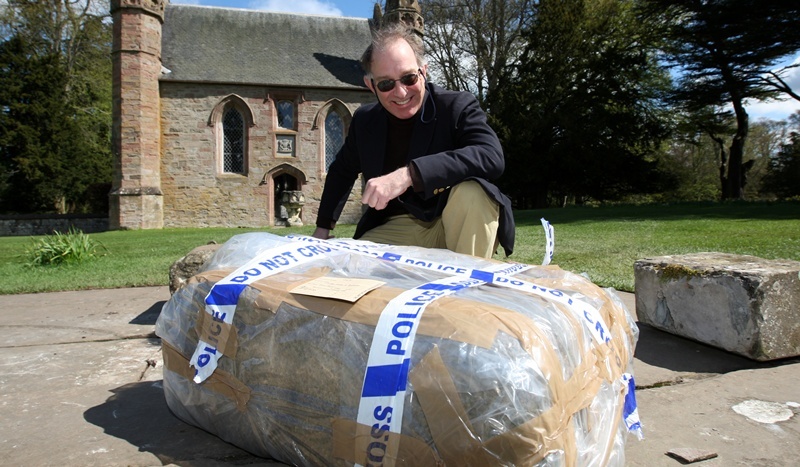Almost two weeks after the mysterious disappearance of one of Scotland’s most iconic artefacts, there is still no sign of the people responsible.
Inquiries continue in a bid to find who removed the replica Stone of Destiny from its resting place at Scone Palace last month.
The unusual crime was reported on April 29 by an eagle-eyed member of staff, who spotted the replacement rock.
Officers carried out a search of the palace grounds and the missing sandstone block, which weighs around 200kg, was found a short distance away but the brass plaque identifying it as a “replica” has not been recovered.
The stone, outside the chapel on Moot Hill, is a copy of the Scottish Coronation Stone, used for centuries to crown monarchs at Scone.
Rumours surfaced that the crime may have been politically motivated and some even speculated that the replacement was the “real” stone, in line with famous conspiracy theories.
Police have issued a fresh witness appeal.ElectionA spokesman confirmed the timing, only a few days before the General Election, may have been important.
“The investigation has established that the imposter stone, discovered where the replica stone had been moved from, is not from the palace grounds,” he said.
“It is a mottled and weathered dense granite stone, not thought to be common to the Perth area, and it’s believed it would have been transported into the grounds by those responsible.
“Equally, given the size and weight of the replica stone and the imposter stone, a vehicle would have been required to bring the fake stone in and it would have taken at least three to four adults to move both stones.
“The brass plaque, which was situated on a post by the replica stone, is still missing.
“As yet no motive has been established for this offence but given that the incident happened just days prior to the national election, we have not discounted the possibility that it was in some way politically motivated.”
The spokesman added that investigators were awaiting the results of a forensic examination of the scene.
The original Scone Stone was last used for a Scottish coronation in 1292, when John Balliol was proclaimed king.
According to historians it was captured by King Edward I as spoils of war and taken to Westminster Abbey.
It remained south of the border until Christmas Day 1950 when a group of four Scottish university students including Ian Hamilton QC carried out a legendary sneak theft to bring it back to its homeland.ConspiratorsIt was swiftly returned to London but brought back to Scotland in 1996 on the orders of then secretary of state for Scotland Michael Forsyth.
Thousands of tourists from all over the world visit the original at Edinburgh Castle every year although conspirators believe it, too, is a fake, saying the real stone lies hidden in a glen in Highland Perthshire.
The tale also took a twist in 2007 when a local photographer told The Courier he had been called out to a secret location in the dead of night to photograph what he believed to be the real stone.
He said it was being moved from one hidden location to another for “safety” and the details had been passed down from father to son over hundreds of years.
Security at Scone Palace is set to be tightened as a result of the theft.
Lord Stormont, whose family own the stately home, told The Courier, “While the palace is one of Scotland’s iconic visitor attractions, it is also a private family home and as such there is a fine balance to be struck between accessibility and security.
“We were all quite shocked and will be taking further steps to secure the stone and deter another incident of this nature from happening again.”
The stolen plaque reads, “A replica of the stone upon which the Kings of Scots were crowned on Moot Hill until 1296 when Edward I took the stone to Westminster Abbey.”
